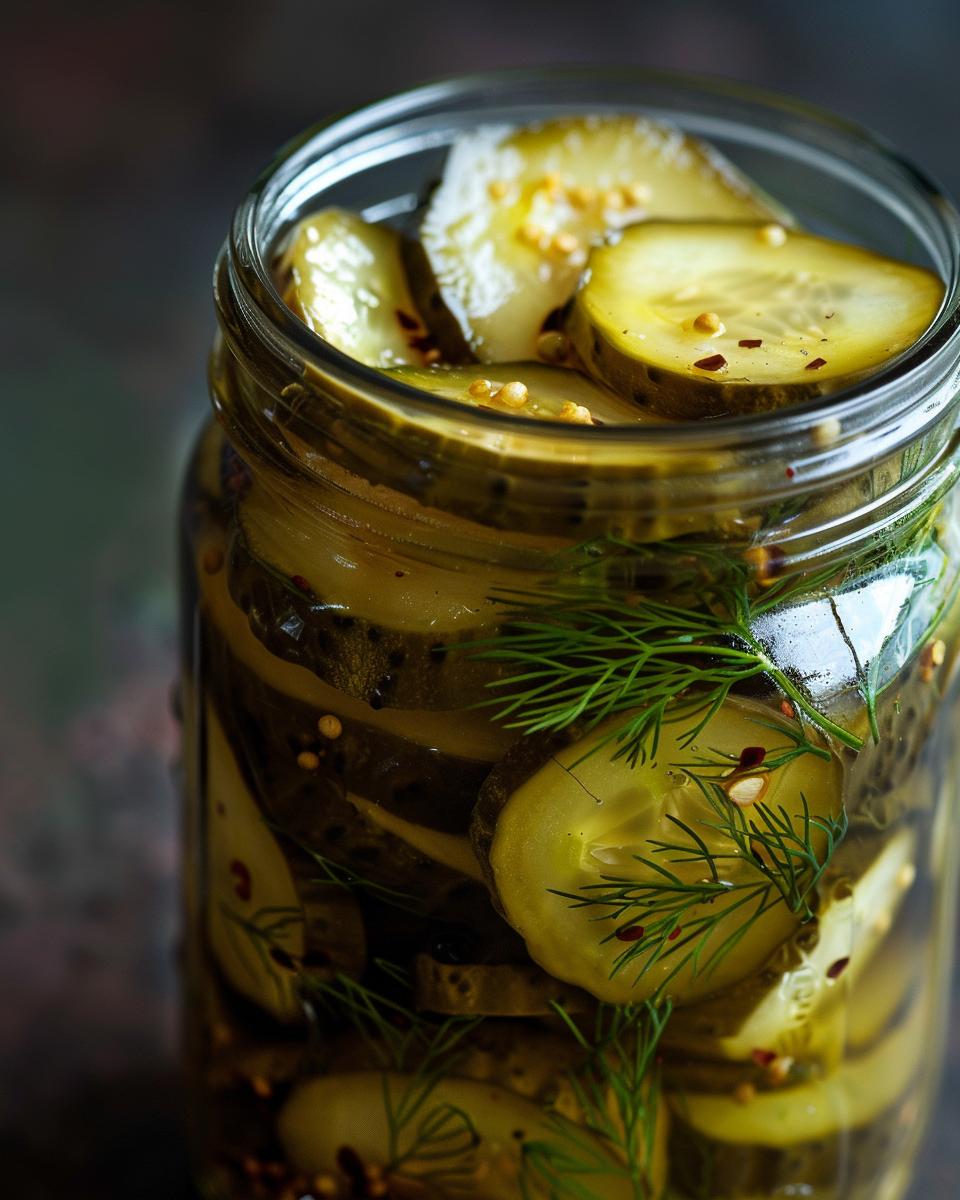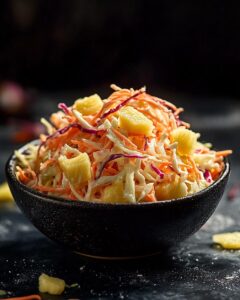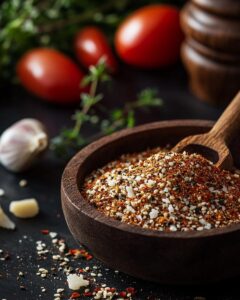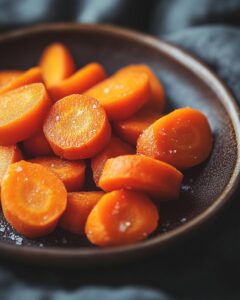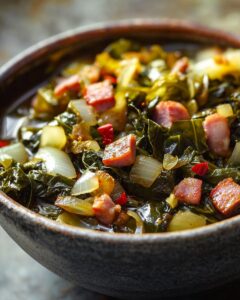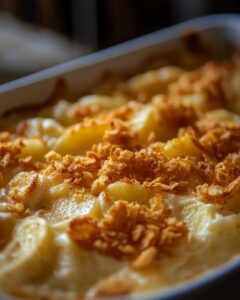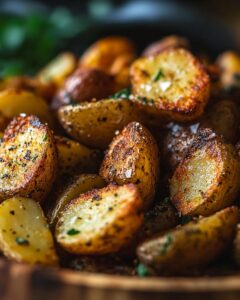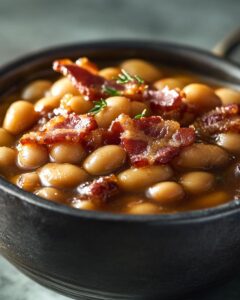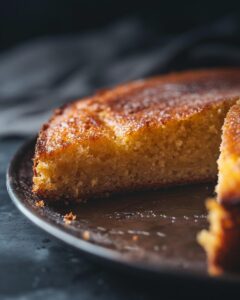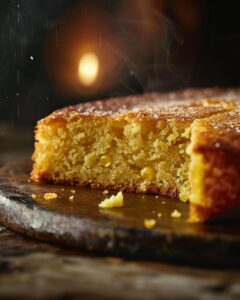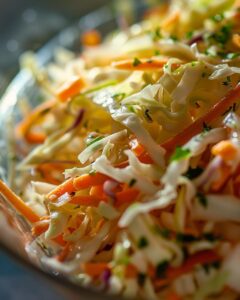Pickle Brine Recipe: Discover the Secret Ingredients for Perfect Pickles
Do you dream of crafting the perfect pickle? The secret lies in a stellar pickle brine recipe. With the right combination of ingredients, you can achieve the crunch and flavor that elevate any meal. Dive into our recipe and discover the magic behind mouth-watering pickles.
In this recipe:
- Essential Ingredients for the Brine
- Step-by-Step Instructions
- Tips for Flavor Variations
- Storage and Serving Suggestions
Our pickle brine recipe isn’t just any brine. It’s a blend of carefully chosen ingredients that promise the perfect balance of tang and spice. Whether you’re a novice or a seasoned pickler, our guide will help you achieve consistent results every time.
Looking for more ways to perfect your pickling skills? Check out our Refrigerator Pickles Recipe for tips on achieving crisp perfection. Or if you prefer a bit of a kick, our Old Fashioned Pickling Brine might be just what you need.
Ready to get started? Gather your ingredients, roll up your sleeves, and let’s make some unforgettable pickles. With our tried-and-true recipe, delicious, crunchy pickles are just a few steps away!
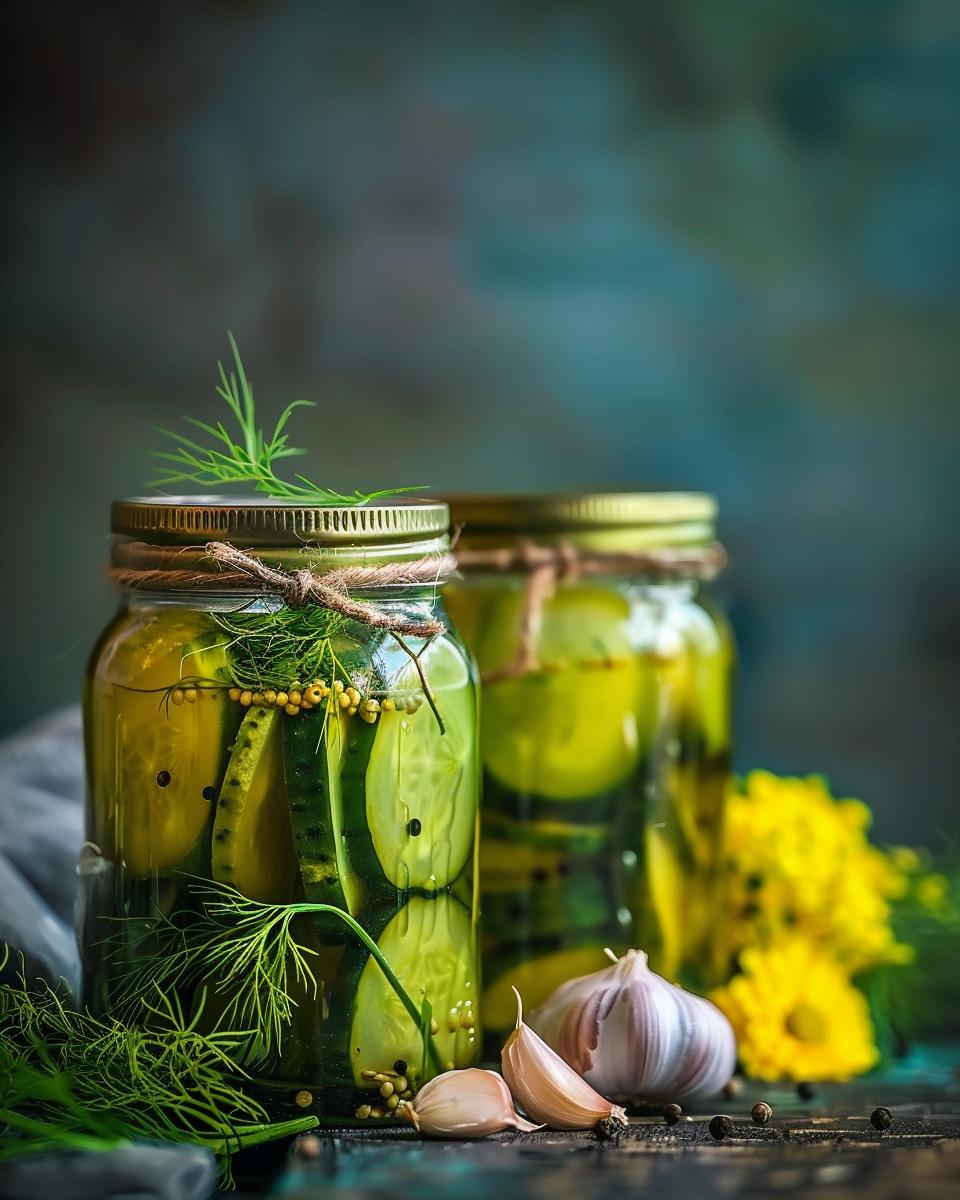
Who Can Make This Recipe
If you’re new to the world of pickling, you’ll be delighted to know that this recipe is perfect for beginners. It’s also great for seasoned cooks looking to whip up a quick batch of delicious dill pickles. The difficulty level is easy, requiring no special skills or complicated techniques. Even if you’ve never pickled anything before, you’ll find this easy dill pickle recipe straightforward and rewarding.
Essential Equipment
To get started, you only need a few basic kitchen tools:
- Medium saucepan
- Fine-mesh sieve
- Glass jar or container
With these essentials, you’re all set to create a basic brine for pickling cucumbers. The simplicity of the process means you can focus on perfecting the flavor and crunch of your pickles, rather than worrying about complex steps or specialized gear. The recipe’s ease makes it ideal for a quick kitchen project or a fun family activity.
Moreover, the ingredients are likely already in your pantry, making this an accessible and cost-effective recipe to try. If you’re looking for more inspiration, check out this comprehensive guide on dill pickles that’s packed with tips and variations.
Once you’ve mastered this recipe, you can confidently explore other pickling adventures. Whether you’re aiming for classic dill pickles or experimenting with unique flavors, this foundational recipe is your gateway to a world of homemade pickling. Happy pickling!
The Ingredients Needed to Make Pickle Brine
Now that we’re all set with minimal equipment, let’s dive into the heart of our pickle brine recipe – the ingredients. Choosing the right ingredients is crucial to achieving the perfect homemade pickle brine. Whether you’re aiming for a classic dill pickle brine or experimenting with other flavors, the quality and proportions of the ingredients play a significant role in the final taste.
Essential Ingredients for Your Pickle Brine
Here’s what you’ll need:
- 1 cup (250 ml) water: The base of your brine, crucial for dissolving salt and sugar.
- 1 cup (250 ml) white vinegar (5% acidity): This gives the brine its tangy kick and helps preserve the pickles.
- 1/2 cup (125 ml) pickling salt (or kosher salt): Provides the essential salty flavor and helps with the preservation process.
With these three key ingredients, you have the foundation for a versatile homemade pickle brine. But the magic doesn’t stop here. Depending on your preferences, you can customize your brine with additional spices and herbs to create your unique pickle brine for canning or just for immediate consumption.
Have you ever wondered why some pickles taste better than others? It often boils down to the brine. A well-balanced brine can make all the difference between a good pickle and a great one. So, take a moment to gather these ingredients and get ready to create the best pickles you’ve ever tasted.
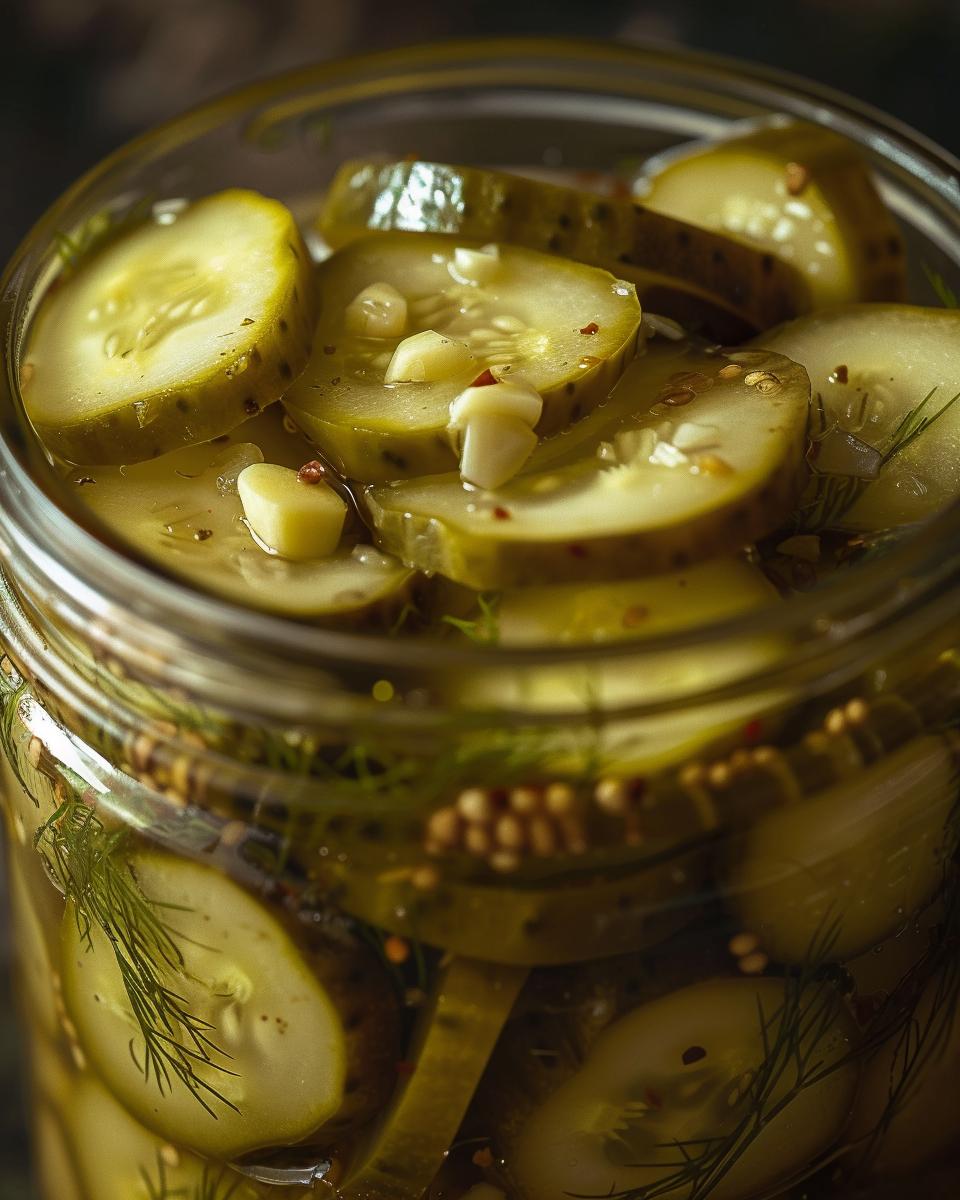
Step-by-Step Guide on How to Make Pickle Brine
Now that we’ve gathered all the ingredients, let’s dive into the process of making your own pickle brine. Follow these simple steps to create a flavorful and versatile brine for all your pickling needs.
Step 1: Combine Ingredients
Start by combining 1 cup of water, 1 cup of white vinegar, 1/2 cup of pickling salt, 1/4 cup of sugar, 2 tablespoons of black peppercorns, and 2 tablespoons of coriander seeds in a medium saucepan. This forms the base for our quick pickle brine recipe.
Are you excited to get started? This step is crucial for achieving the right balance in your dill pickle brine vinegar water salt ratio. Make sure to measure accurately to ensure the best results.
Step 2: Bring to a Boil
Next, bring the mixture to a boil over high heat. Stir occasionally to help dissolve the salt and sugar. Bringing the mixture to a boil ensures that all the flavors meld together beautifully. Once boiling, you will notice the aroma of spices filling your kitchen.
Doesn’t that sound wonderful? It’s amazing how quickly the brine comes together, making this an easy dill pickle brine recipe for canning.
Step 3: Simmer and Cool
After reaching a boil, reduce the heat to medium-low. Let the mixture simmer for 10-15 minutes. This simmering process thickens the brine slightly and enhances the flavor profile. Stir occasionally to prevent any sticking at the bottom of the pan.
Once the simmering is complete, remove the saucepan from the heat. Allow the brine to cool to room temperature. This cooling step is essential for preserving the crispness of your pickled vegetables.
And there you have it! You’ve just created a versatile and delicious pickle brine. Whether you’re using it as a quick pickle brine recipe or for long-term canning, this brine will elevate your pickling game.
Serving and Storing Ideas and Tips
Now that you’ve mastered the steps to make your own pickle brine, let’s dive into the specifics of serving and storing these delightful pickles. With minimal cooking knowledge and experience required, this recipe is accessible for everyone. Here are some practical tips to ensure your pickles stay fresh and tasty.
Storing Your Pickles
Once your pickles are submerged in the brine, you’ll want to store them properly to maintain their flavor and crunch. The best brine for fridge pickles ensures they stay crisp and delicious for months. Always use a clean, airtight container to prevent contamination. Store the container in the refrigerator, where the pickles will last up to six months.
Remember, it’s important to let the pickles sit in the brine for at least 24 hours before tasting. This allows the flavors to meld beautifully. For a different twist, try using dill pickle brine for marinating chicken. It adds a tangy, flavorful kick to your poultry, making it perfect for grilling or roasting.
Another exciting option is using the dill pickle brine for pickling eggs. Simply place boiled eggs in the brine and let them sit in the refrigerator for a few days. The result is a zesty, protein-packed snack that’s both nutritious and delicious.
Consider labeling your jars with the date of preparation. This helps you keep track of freshness and ensures you enjoy the pickles at their peak flavor. Additionally, if you find yourself with excess brine, don’t discard it. Brine can be reused to pickle more vegetables or even added to salad dressings and marinades for an extra burst of flavor.
Whether you’re a seasoned cook or a beginner, this pickle brine recipe is your gateway to creating mouth-watering pickles with ease. Enjoy experimenting with different vegetables and spices to make the recipe your own. Happy pickling!
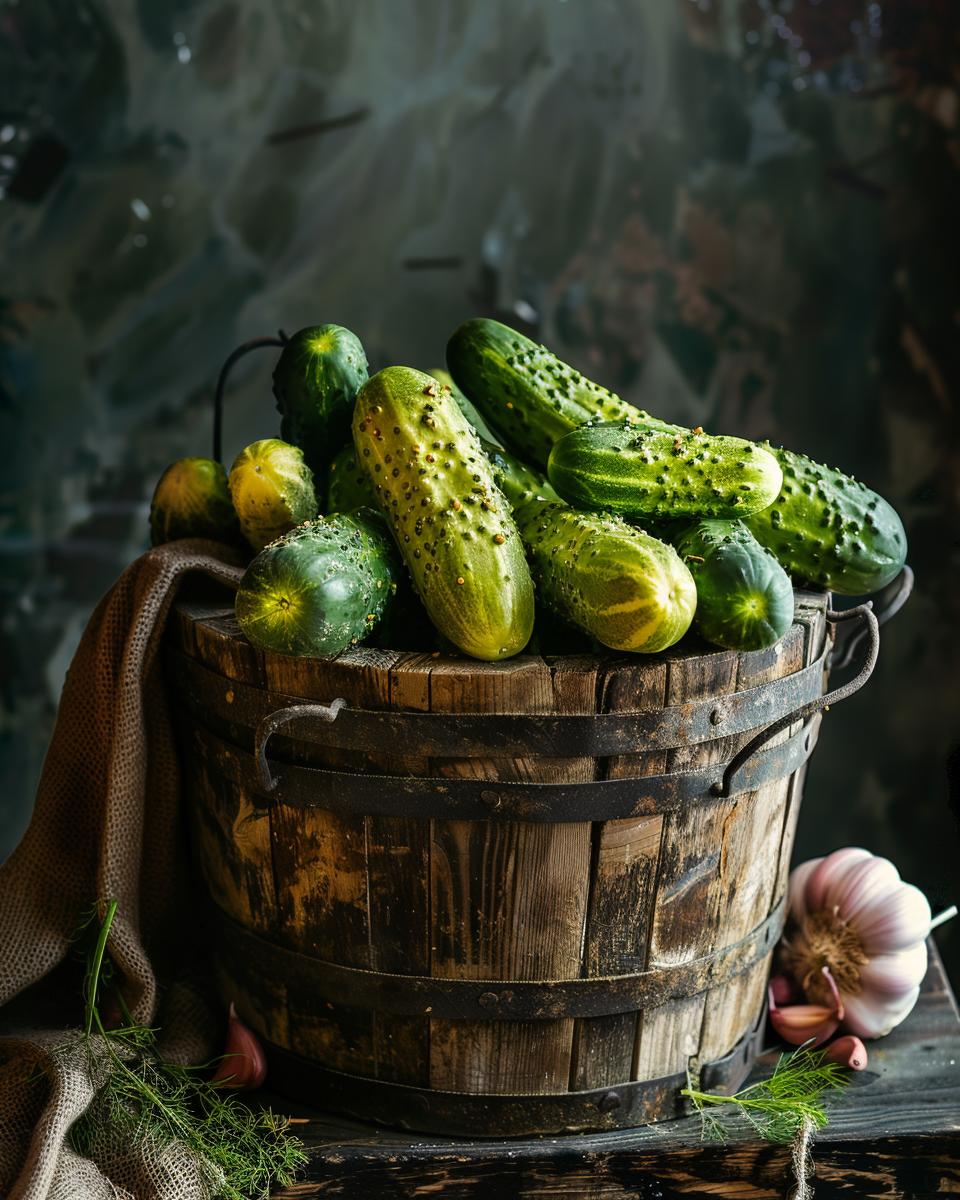
Pro Tip
- Always sterilize your jars before using them for the pickle brine recipe.
- Use fresh, high-quality ingredients for the best flavor.
- Adjust the spices to suit your taste preferences.
- If you prefer a crunchy texture, briefly blanch vegetables before pickling.
- Label jars with the date of preparation to track freshness.
- For a sweeter brine, add an extra tablespoon of sugar.
- Experiment with herbs like dill, thyme, and rosemary for unique flavors.
- Ensure the brine covers the vegetables completely to avoid spoilage.
FAQ – Ingredient Replacement Options, Money Savings Tips
When it comes to crafting the perfect pickle brine, several questions often arise about ingredient swaps and cost-saving measures. Below, we’ve addressed some of the most common queries to help you create the best pickle brine recipe for your needs.
Ingredient Replacement Options
Can I use apple cider vinegar instead of white vinegar?
Yes, you can definitely use apple cider vinegar in place of white vinegar. However, keep in mind that it will alter the flavor slightly. Apple cider vinegar tends to impart a fruitier, sweeter taste, which can be a delightful twist, especially if you’re aiming for an old-fashioned pickling brine.
Can I use table salt instead of pickling salt?
No, it’s best not to use table salt. Table salt often contains additives like iodine and anti-caking agents that can cloud your brine and affect the flavor. Stick to pickling salt or kosher salt for the best results.
Can I use this pickle brine for chicken wings?
Absolutely! Many people love using pickle brine for chicken wings to add an extra layer of flavor. Just ensure the brine is well-balanced with spices, perhaps even turning it into the best pickle brine recipe for spicy pickles by adding some chili flakes or hot peppers.
Money-Saving Tips
How can I save money on spices?
One effective way to save money is by buying spices in bulk. Not only does this reduce the cost per ounce, but it also ensures you have enough on hand for future pickling projects. Consider visiting local bulk stores or ordering online for the best deals.
Are there any budget-friendly alternatives to pickling salt?
Yes, kosher salt is a great budget-friendly alternative to pickling salt. It does the job beautifully without the added cost. Just make sure to avoid table salt, as mentioned earlier, to keep your brine clear and flavorful.
For more tips and detailed recipes, you can check out this pickle brine recipe from Southern Living.
Whether you’re brining vegetables or looking to enhance your next batch of chicken wings, these tips and substitutions can help you achieve the perfect flavor while keeping costs down.

